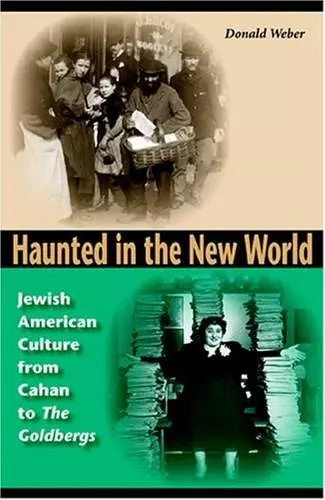Haunted in the New World
Jewish American Culture from Cahan to The Goldbergs
Format:Hardback
Publisher:Indiana University Press
Published:8th Jun '05
Currently unavailable, and unfortunately no date known when it will be back

Explores the role of emotions in artistic works that shaped Jewish American culture in the first half of the 20th century.
Maps the affective landscape of Jewish American culture. This book offers a genealogy of the emotions - shame and self-hatred, nostalgic longing and the impulse to forget - that organized 20th-century Jewish American expressive culture.
"Haunted in the New World is a superb, insightful, and acutely intelligent piece of work. It makes a real contribution to the understanding of ethnicity in general and Jewish American culture in particular." —Morris Dickstein
In 1916 Abraham Cahan, editor of the Jewish daily The Forward, warned his Yiddish-speaking readers of the potential psychic dangers associated with their New World situation. "You will not be able to erase the old home from your heart," he cautioned his immigrant readers, transplanted from the shtetls and cities of Eastern Europe to exhilarating, if bewildering, multicultural New York. Building on Cahan's deeply personal reflection, Haunted in the New World maps the affective landscape of modern Jewish American culture.
Drawing on scholarship in a range of disciplines, including the sociology of manners, the study of the role of foodways in the formation of ethnic identity, the psychoanalysis of shame and self-hatred, and the role of memory for those unsettled by the experience of migration, Donald Weber traces the impact of the tension between nostalgia for the world left behind and the desire to blend into American culture, as evidenced in a number of key texts in the canon of Jewish American expression. These range from early immigrant fiction and cinema, through the novels of Anzia Yezierska and Henry Roth, to Hollywood's representation of Jews in The Jazz Singer and Gentleman's Agreement, to Saul Bellow, Gertrude Berg (Molly Goldberg), and the comedians Milton Berle and Mickey Katz. Setting an array of figures and works in creative dialogue, Haunted in the New World offers a genealogy of those core emotions—shame and self-hatred, nostalgic longing and the impulse to forget—that organized much of 20th-century Jewish American expressive culture and transformed American culture at the same time.
More than five million East European Jews migrated to the US between 1880 and 1920, and a challenge confronted the first generation of Jewish novelists: how to transmute their experiences of poverty and shame into the materials of art. Weber (Mount Holyoke College) offers a fascinating study of the popular culture that resulted from the Jewish encounter with the US. The author looks first at Abraham Cahan and Anzia Yezierska, whose fiction captures the acute loss of dignity suffered by immigrants adapting to the new world. He provides clear illustrations of how they popularized their own circumstances and in some cases (Eddy Cantor, Al Jolson, George Jessel, Fannie Brice) became famous movie stars. Weber discusses Henry Roth's Call It Sleep, which by the mid 1930s had become the first undeniable classic of the immigrant era, and The Goldbergs, which became an enormously popular radio (later television) soap opera, conveying sentimental family-centered values that helped sustain listeners during the Depression. Weber ends with the novels and short fiction of Saul Bellow, providing a subtle, wise discussion that says important things about the way Jews have chosen to participate in American culture. Summing Up: Highly recommended. Upper-division undergraduates through faculty.January 2006
-- M. Butovsky * emeritus, Concordia UniversiISBN: 9780253345790
Dimensions: unknown
Weight: 581g
272 pages